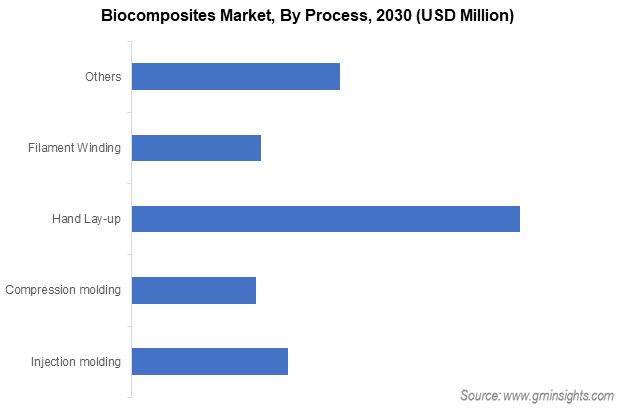Home > Chemicals & Materials > Advanced Materials > Biocomposites Market
Biocomposites Market Analysis
- Report ID: GMI3548
- Published Date: Sep 2022
- Report Format: PDF
Biocomposites Market Analysis
With regards to source, the plant-based segment accounted for more than USD 13 billion in 2021 and is likely to depict over 12% CAGR between 2022 and 2030. Plant-based fibers possess high fracture toughness, non-corrosive nature, high strength-to-weight ratio, sustainability, and renewability, offering them unique advantages over other materials. The increasing application of biomaterials across several end-use verticals, including automotive, marine, aerospace, construction, healthcare, and packaging, may augment the biocomposites market share over the coming years.

In terms of products, the hybrid biocomposites segment held over 73% market share in 2021 and is expected to surpass USD 37 billion by 2030. These materials are used for designing different structures across industrial, marine, commercial, biomedical, and aerospace sectors due to their ability to offer superior protection against corrosion and excellent fatigue and impact resistance. The increasing utilization of hybrid biocomposites in a range of household furnishings and sports equipment may boost the segment share over the analysis timeframe.

Based on the process, the hand lay-up segment exceeded USD 7 billion in 2021 and is anticipated to hold more than 38% market share by 2030. The process is referred to as the simplest composites molding technique, offering simple processing, low-cost tooling, and a broad range of part sizes. It involves minimum investment in equipment and ensures consistent quality and high production rate with skilled labor, driving its demand throughout the projection period.
The biocomposites market from transportation applications accounted for over USD 8 billion in 2021 and is poised to surpass USD 23 billion by 2030. The increasing demand for electric fleet due to rising ecological concerns and escalating efforts toward mitigating global climate change may foster production across the transportation sector. The ongoing advancements in vehicle technologies and the rising emphasis on the use of more sustainable and environmentally friendly vehicle scomponents may drive the demand for bio-based composites in the foreseeable future.

With respect to the regional landscape, the Asia Pacific segment held over 36.5% of the market share in 2021 and is likely to record a valuation worth more than USD 20 billion by 2030. The massive population growth, in tandem with rapid industrial development and urbanization, has propelled the demand for adequate housing and commercial infrastructure. The surge in construction activities across the region, coupled with the supportive regulatory framework, and inflowing foreign direct investments in the construction sector may fuel the growth of the regional industry.

